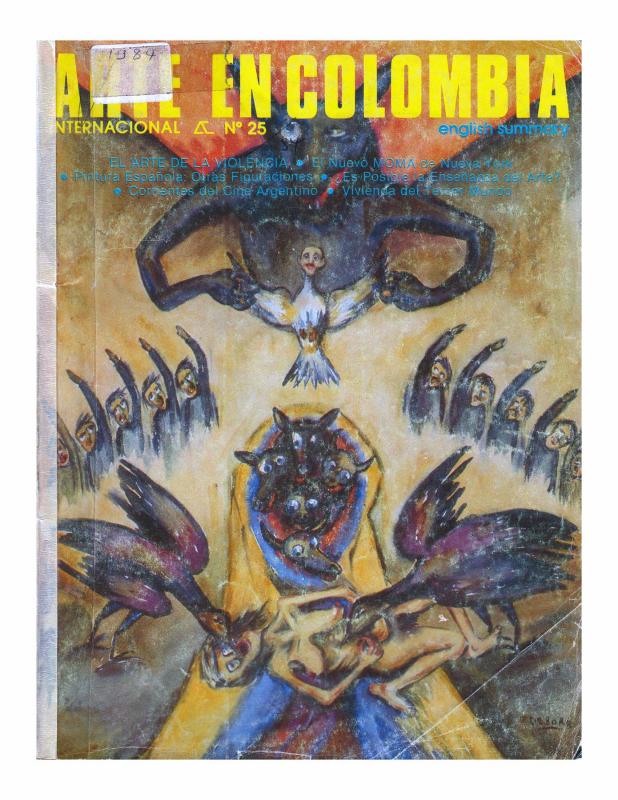This article by Margarita Malagón-Kurka (b. 1965) is unique among the writings on art from Colombia that address the widespread violence in that country [see “Gráfica testimonial en Colombia,” doc. no. 1092323 and “El arte de la violencia: nunca la imaginación supera su crudelísima realidad,” doc. no. 1093642] insofar as it analyzes variations in works according to the intentions of their creators. Malagón-Kurka argues that these variations are due to different perceptions of the human condition, reformulations of the dynamics of violence, and mostly, new visions of artistic practices.
Neo-figuration and the concept of indexicality are fundamental to Malagón-Kurka’s argument. Neo-figuration is a movement that emerged in the second half of the twentieth century in opposition to abstract art; it entails a return to the represented object and an emphasis on expressiveness in art. The notion of indexicality, formulated in the late seventies by theorist and art critic Rosalind Krauss, involves a language that is both evocative and indicative in works of art; this language invites the viewer to interrogate the original referent, which in the Colombian case, is bound to human actions and behavior.
María Margarita Malagón-Kurka studied philosophy at the Universidad Javeriana. She has a doctorate in art history from the University of Texas (Austin). Her publications include La imagen necesaria en Luis Caballero; Gusto y gesto en la obra de Beatriz González; Ensayos sobre dos artistas colombianos contemporáneos: Luis Caballero y Óscar Muñoz;and Doris Salcedo, irresolución como posibilidad.


